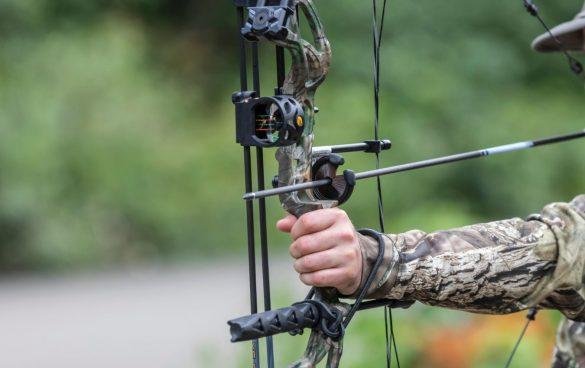Table of Contents
Bow hunting? Simple, right? Just aim and release. But ask any seasoned bow hunter, and they’ll tell you – it’s like trying to find matching socks in your drawer, easier said than done.
I’ve spent years, sometimes up a tree, sometimes down in the dumps, refining the art of bow hunting. From days with perfect shots to times when I’d question if the deer were wearing invisibility cloaks.
Bow Maintenance and How to Avoid Freak Accidents
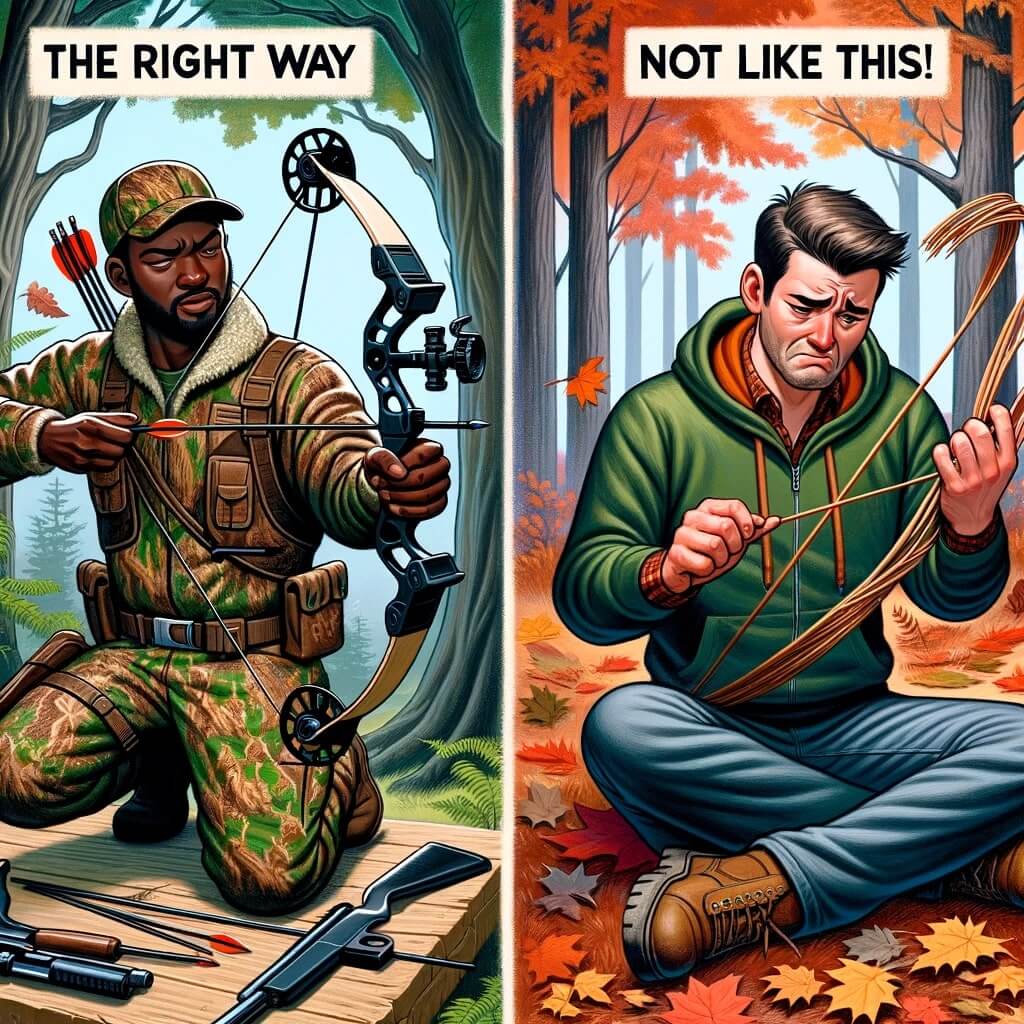
Bows are like pets. No, they don’t need to be fed, but they need constant care. Maintenance isn’t just about making your bow last longer; it’s about avoiding those slap-your-forehead accidents. I recall a tale of a friend who had his string snap mid-shot on public land. His face? More shocked than a cat caught barking.
Being an experienced bowhunter has taught me that maintenance is the secret sauce to avoiding accidents. Remember that mature buck on public land that vanished because of a squeaky bow limb? It still stings.
And believe me, a squeaky limb is like an alarm bell in the wild. Whether on private lands or public, maintaining your equipment can mean the difference between a successful hunt and going home empty-handed.
Archery Accidents And How To Avoid Them
I’ve had my share of oops moments. Like the time I took an elevated position on a slope thinking I was in the perfect hunting spot, only to find an obstructed shooting lane. Lesson learned? Always clear your shooting lane and check for safe shot angles.
Safety first, always! During the archery season, accidents happen in the blink of an eye. Or, in my case, that split second when I forgot to double-check my equipment. Always ensure you have a clear shooting angle, maintain a safe range, and prepare for varying hunting scenarios. It’s as unpredictable as my cousin’s dance moves at a wedding, so always be on guard.
Bow Maintenance Checklist [Pre-Shoot Checklist]
Your bow, like a good dance partner, deserves respect. Step on its toes (or neglect its maintenance), and it might just step out of the dance. Here’s what you should be looking out for:
- Bowstring – frayed like my nerves before a date? Replace.
- No cracks in the limbs – we’re talking about the bow, not your arms!
- Tighten any loose screws – both on your bow and in your plan.
- Steady sight pin – essential for avoiding those “Oh deer!” moments.
- Smooth draw cycle – like rehearsing your dance moves.
- Block Target: Test your shots on it. It’s like your dance rehearsal.
- Proper Archery Form: The rhythm of your dance. Consistency is key.
Aim Small Miss Small
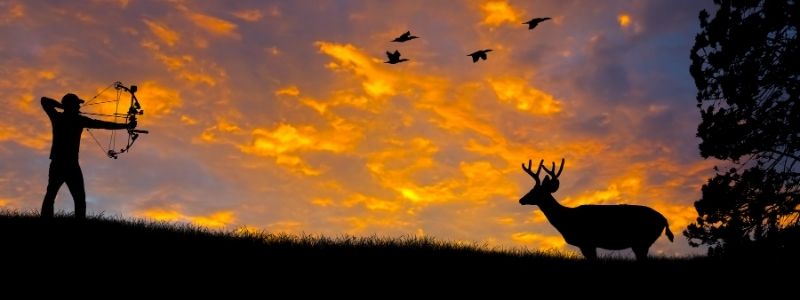
Want to be a top-shot? Here’s a secret – aim for a button, not the entire shirt. Smaller targets mentally train your focus.
Also, archery practice should be as regular as your morning coffee – it’s the difference between “Yay!” and “Nay.” At the shooting range, targeting smaller objects can dramatically improve accuracy.
Set Up in Advance to Minimize Sweat and Odor
Deer have noses better than a grandma smelling fresh cookies. Once, during my early hunting days, a buck snubbed me probably thinking, “Eau de Human? Nope!” So, minimize your scent, and maybe they won’t “nose” you’re there.
Hunting the Early Season
This early deer hunting season is as unpredictable as my aunt’s casserole. But with some clever tactics, you can have your cake and eat it too.
Don’t Pressure the Deer
Pressuring them makes deer skittish – sort of like how I feel at family reunions. One wrong move and you could end up putting the whole deer herd on high alert. Especially on public lands, where hunting pressure is already high, the game becomes more of patience and strategy. Approach with the stealth of a cat and the patience of a monk.
Plan in Advance
My trail cams have been lifesavers. They’re like reality TV for deer. Through them, I’ve witnessed majestic bucks near crop fields and understood their patterns. Believe me, these cams are better than most prime-time shows. Information is your bow-hunting currency.
Target Bedding-to-Feeding Routes
Understanding food sources and tracking paths is a game-changer. It’s like knowing the best time to raid the office snack bar – crucial for success!
Having the intel from my trail cams, I once identified a clear path from a bedding area to a wild food source. Armed with my bowhunting gear, I took my position well before dawn. As the first light broke, a magnificent mature buck, probably weighing a ton, made its way. My heart raced. An ethical, clean shot later, the satisfaction was immeasurable.
Hunting the Rut
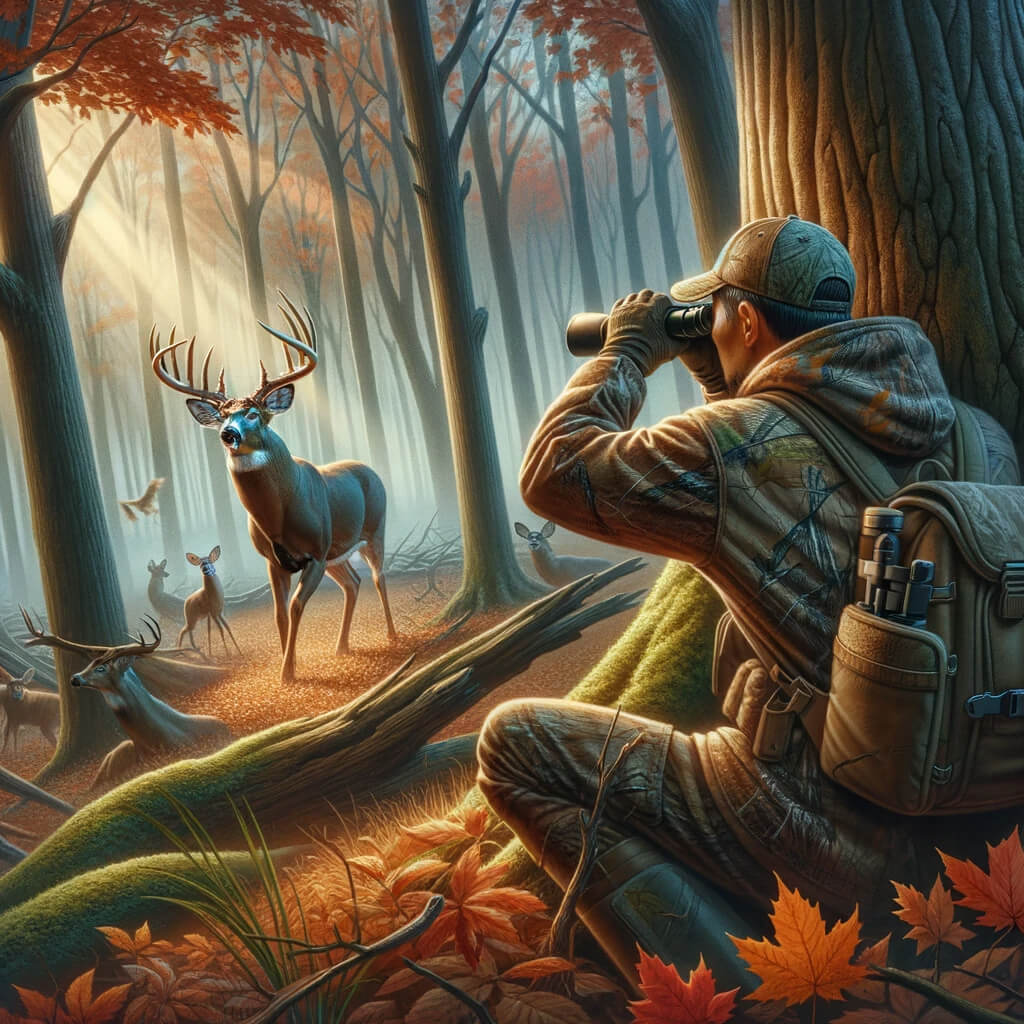
Where bucks go lovestruck and, if you’re quiet, you might just hear them playing Barry White songs in the background. Emotions, action, and prime-time drama.
As a treestand hunter, use your elevated position to observe and plan. Stalking the does might just lead you to that trophy buck. Remember, every rustle, every whisper of the wild is a piece of the puzzle.
Stalk the Does
Trust me on this; where there’s a doe, there’s action. Bucks are on the prowl, and sometimes, they lead you right to them. Spot-and-stalk hunting during this season becomes a game of shadows and whispers.
Use Your Ears
Sound is your ally. From the soft patter of hooves to the rustle in the bushes, the soundtrack of the wild is full of clues. Sometimes, listening pays off more than an eavesdropped gossip.
Hunting the Late Archery Season
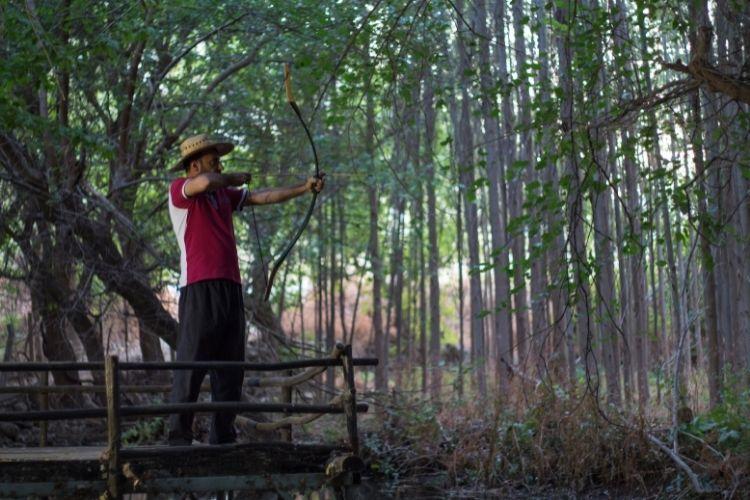
Late-season hunts have a serene beauty. Snow-capped terrains, the hush of the wild, and the thrill of the hunt. Food sources become the center of activity. Set up near these and you might just strike gold.
Your movements should be as silent as a whisper; a wrong step can turn the hunt upside down. And don’t forget, whether it’s archery hunting or rifle hunting, never stop practicing. Each draw cycle, each release, takes you one step closer to mastery.
Hunt the Food
In the biting cold, a food source becomes the equivalent of a bustling marketplace. I’ve had some of my best hunts setting up near these. Once, in the midst of snowflakes, a doe graced my shooting range, making for a clean, lethal shot.
Master the Art of Stealth
Late season requires you to be a ghost. Move silently; it’s not just great for hunting but also for sneaking into the house past curfew.
With each draw cycle, the thrill intensifieds, leading up to that perfect release technique that will seal the deal.
Don’t Stop Practicing
Keep honing your craft, whether it’s rifle hunting, bowhunting, or just understanding the draw cycle. Every shot, every move, every stance contributes to your growth as a hunter. Every seasoned bowhunter knows that practice is a never-ending journey.
Be it during deer season or the off-period, the block target remains my loyal companion. From refining your archery form to experimenting with different hunting stances, the learning never stops. And remember, as my mentor once said, “The bow you don’t practice with is the bow you don’t truly own.”
The Bowhunter’s Journey
Let’s be real; bowhunting sometimes feels like trying to thread a needle during an earthquake. One day you’re the archery rockstar, and the next, you wonder if the deer are secretly laughing at your missed shots. But isn’t that the beauty of it all? The thrill, the bloopers, and the unparalleled joy of finally getting it right.
So, whether you’re missing the mark or hitting bullseyes, remember to take a moment and chuckle at the wild ride. After all, it’s not just about catching that mature buck; it’s about the hilarious stories we gather along the way.
Here’s to more “Oops!” moments, triumphant tales, and belly laughs in the great outdoors! Cheers to every bowhunter who knows that every shot, missed or hit, is just another epic story waiting to be told.

